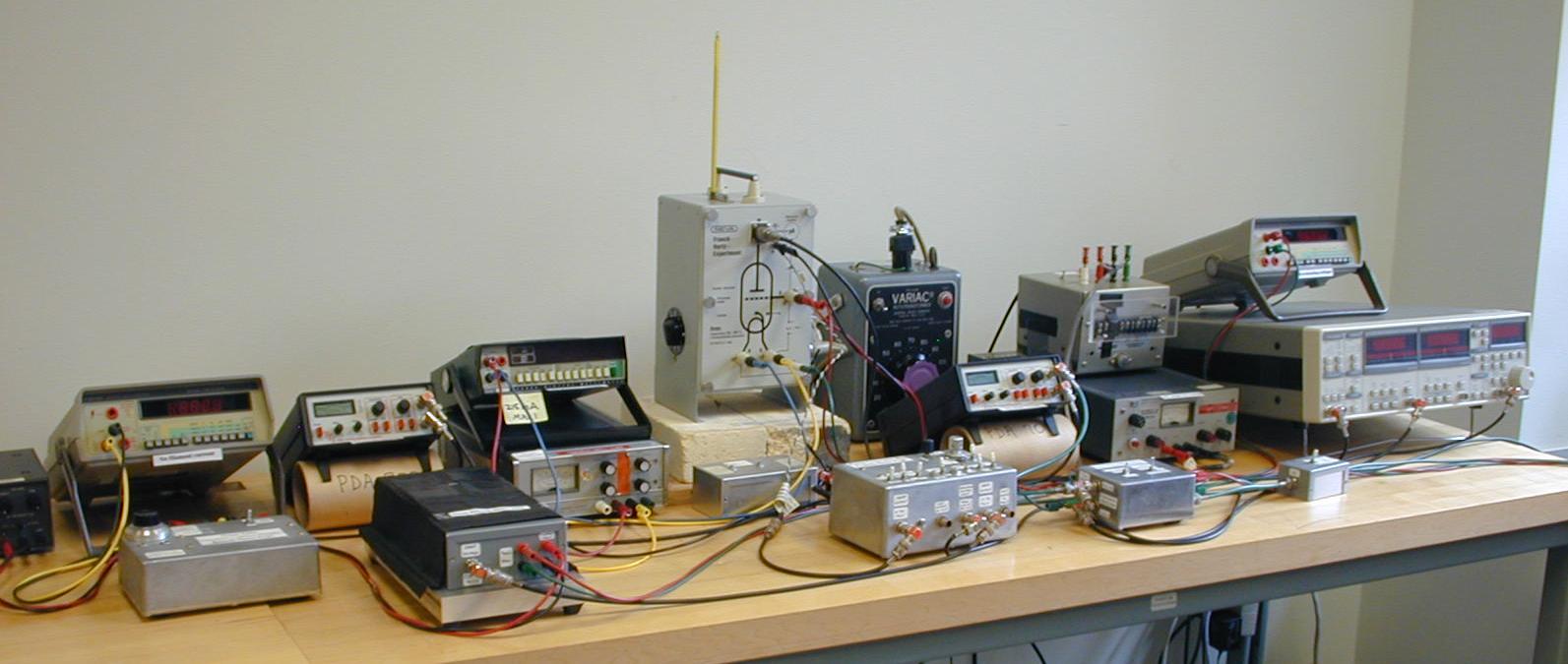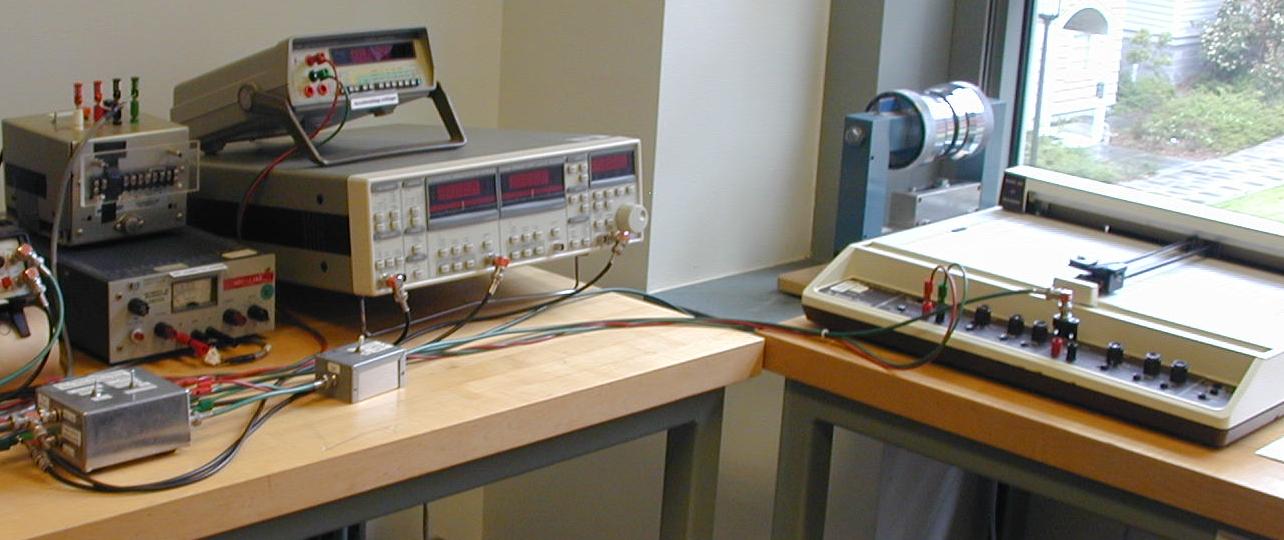The Franck-Hertz Experiment

 In this experiment students repeat the original measurement that
demonstrates the quantization of atomic energy levels using a probe
other than photons. Electrons emitted from a heated cathode are
accelerated by a potential difference as they pass through a mercury
vapor. When they have gained sufficient energy, the electrons collide
inelastically with mercury atoms, exciting them from the ground
state. Electrons are collected at the anode, and the anode current
shows minima and maxima at potential differences related to the energy
difference between the ground state and the lowest lying excited
states of the mercury atom. Thus, the students see striking evidence
for energy quantization simply by watching the digital current
meter.
In this experiment students repeat the original measurement that
demonstrates the quantization of atomic energy levels using a probe
other than photons. Electrons emitted from a heated cathode are
accelerated by a potential difference as they pass through a mercury
vapor. When they have gained sufficient energy, the electrons collide
inelastically with mercury atoms, exciting them from the ground
state. Electrons are collected at the anode, and the anode current
shows minima and maxima at potential differences related to the energy
difference between the ground state and the lowest lying excited
states of the mercury atom. Thus, the students see striking evidence
for energy quantization simply by watching the digital current
meter.
The Franck-Hertz effect is also used to investigate neon atoms
where bright emission bands are visually observed in the regions where
the electron have sufficient energy to excite neon atoms from the
ground state.
Experiment Information
- Experiment Instructions (2025)
- Manufacturer's information on the Ne tube
- Mercury vapor pressure table (from Lange's Handbook of Chemistry, 1999)
- Rapior, G., K. Sengstock, and V Baev, "New features of the Franck-Hertz experiment," Am. J. Phys., 74, p. 423-428 (2006).
Relevant Papers
- Hanne, G. F., What really happens in the Frank-Hertz experiment with mercury?, Am. J. Phys., 56, 696 (1988); doi: 10.1119/1.15503
- McMahon, D. R. A., Elastic electron-atom collision effects in the Franck–Hertz experiment, Am. J. Phys. 51, 1086 (1983); doi: 10.1119/1.13331
- Buhr, W., W. Klein, and S. Pressler, Electron impact excitation and uv emission in the Franck–Hertz experiment, Am. J. Phys. 51, 810 (1983); doi: 10.1119/1.13123
- Martin, A. D., and P. J. Quinn, Electron spectroscopy using a Franck-Hertz tube, Am. J. Phys., 52, 1114 (1984)
- Sigeneger, F., R. Winkler, and R. E. Robson, What really happens with the electron gas in the famous Franck-Hertz experiment?, Contrib. Plasma Phys. 43, 178-197 (2003) doi: 10.1002/ctpp.200310014
- Sigeneger, F., and R. Winkler, On the kinetics of electron trapping in the Franck-Hertz experiment (A short report about the preceding work; reference unknown).
- Nicoletopoulos, P., Critical potentials of mercury with a Franck–Hertz tube, Eur. J. Phys. 23 533–548 (2002).
- Rapior, G., K. Sengstock, and V Baev, "New features of the Franck-Hertz experiment," Am. J. Phys. 74, 423-428 (2006).
- Liu, F. H, Franck-Hertz experiment with higher excitation level measurements, Am. J. Phys. 55, 366-369 (1987)